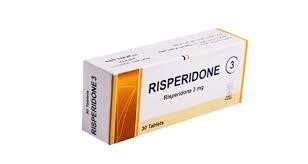A nurse is assessing a client after administering epinephrine for an anaphylactic reaction. Which of the following findings should the nurse identify as an adverse effect of this medication?
Hypotension
Report of tinnitus
Report of chest pain
Ecchymosis
The Correct Answer is C
- A. Hypotension is not an adverse effect of epinephrine, but rather a sign of anaphylaxis that epinephrine can help to reverse by causing vasoconstriction and increasing blood pressure.
- B. Report of tinnitus is not an adverse effect of epinephrine, but rather a symptom of aspirin toxicity, which can occur in some clients who take aspirin for allergic reactions.
- C. Report of chest pain is an adverse effect of epinephrine, as it can cause cardiac dysrhythmias, angina, and myocardial ischemia by increasing the heart rate and oxygen demand of the myocardium.
-D. Ecchymosis is not an adverse effect of epinephrine, but rather a sign of bleeding disorders or trauma that can cause bruising under the skin.
Nursing Test Bank
Naxlex Comprehensive Predictor Exams
Related Questions
Correct Answer is A
Explanation
Implement fall precautions for the client.
- A. Implement fall precautions for the client. This is correct because risperidone can cause orthostatic hypotension, which can increase the risk of falls and injuries. The nurse should advise the client to change positions slowly, avoid alcohol and dehydration, and use assistive devices as needed.
- B. Monitor the client's thyroid function. This is incorrect because risperidone does not affect thyroid function. The nurse should monitor the client's thyroid function if they are taking lithium, which can cause hypothyroidism.
- C. Place the client on a fluid restriction. This is incorrect because risperidone does not cause fluid retention or overload. The nurse should encourage adequate fluid intake and monitor the client's fluid balance.
- D. Discontinue the medication if hallucinations occur. This is incorrect because hallucinations are a symptom of schizophrenia, not a side effect of risperidone. The nurse should not discontinue the medication abruptly, as this can cause withdrawal symptoms and relapse of psychosis. The nurse should assess the client's response to the medication, report any adverse effects, and adjust the dosage as prescribed.

Correct Answer is B
Explanation
- A. Heart rate 136/min is a normal finding for a newborn. The normal range of heart rate for a newborn is 100 to 160/min.
- B. Nasal flaring is an abnormal finding for a newborn. Nasal flaring indicates respiratory distress and may be caused by conditions such as pneumonia, meconium aspiration, or congenital heart defects.
- C. Transient strabismus is a normal finding for a newborn. Transient strabismus is a temporary misalignment of the eyes that occurs due to weak eye muscles and poor coordination. It usually resolves by 3 to 6 months of age.
- D. Overlapping of sutures is a normal finding for a newborn. Overlapping of sutures is caused by molding of the skull during delivery and allows the head to fit through the birth canal. It usually resolves within a few days after birth.
Whether you are a student looking to ace your exams or a practicing nurse seeking to enhance your expertise , our nursing education contents will empower you with the confidence and competence to make a difference in the lives of patients and become a respected leader in the healthcare field.
Visit Naxlex, invest in your future and unlock endless possibilities with our unparalleled nursing education contents today
Report Wrong Answer on the Current Question
Do you disagree with the answer? If yes, what is your expected answer? Explain.
Kindly be descriptive with the issue you are facing.
